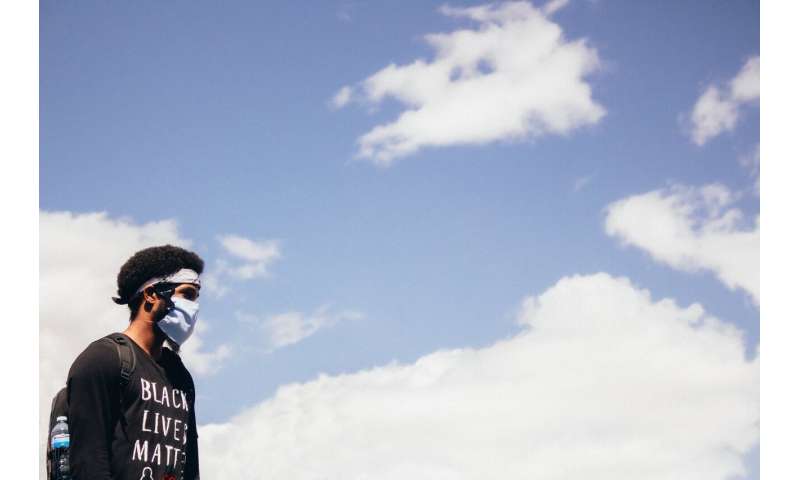
COVID-19 is disproportionately affecting Black, Asian, and minority ethnic (BAME) people who are more likely to become critically ill and die from the infection. Much of the discussion on this relationship has centered on the greater prevalence of certain underlying health conditions among people from BAME communities, such as diabetes, heart, and circulatory diseases: illnesses which are known to be common pre-existing conditions for people dying from COVID-19.
However, this focus on pre-existing health conditions, which in the popular imagination are associated with behavioral risk factors, such as dietary choices, tend to obscure the real reasons behind the BAME population increased risk from COVID-19. In fact, the toll that COVID-19 is taking on the BAME population reflects fundamental socio-economic inequalities, which not only help to explain higher rates of underlying poor health, but also other factors associated with increased risks of catching and then becoming seriously ill and dying from COVID-19. The intimate relationship between poor health, mortality, and social inequalities is well understood. In the present case, it arises from a complex interaction between ethnicity, living conditions, occupations, ambient air quality, area deprivation, underlying heath conditions, relative economic disadvantage, and poverty.
Consequently, to address disproportionate deaths for the BAME population due to COVID-19, we need to go beyond narrowly-focused clinical concerns relating to people from ethnic minority backgrounds. In evidence that our team from Aston presented to the Women and Equalities Committee’s inquiry on the unequal impact: Coronavirus (COVID-19) and the impact on people with protected characteristics; we highlighted the important risk factors beyond underlying health conditions which are contributing to the higher incidence of poor outcomes for this group.
People from BAME backgrounds are more likely to live in densely populated urban areas than the white population, where it is more difficult to practice prevention measures such as social distancing to avoid infection. Black (98.1%) and Asian (97.4%) minority groups are more likely to live in urban locations than the white population (79.1%), making them more susceptible to infection than the white population.
For some BAME groups, household composition also makes it more difficult to socially isolate effectively, which may increase exposures to high doses of the virus. For example, Asian households make up 21% of “other” households with a multi-generational family. In addition, BAME groups are more likely to live in overcrowded households. The rate of overcrowding for Bangladeshi, Pakistani and Black African households were 30%, 16% and 15% respectively. The rate of overcrowding for all BAME groups (range 3%-30%) is higher than in White British households at 2%.
People from BAME backgrounds are more likely to live in areas with poor air quality, which contributes to the development of high-risk underlying conditions for COVID-19, such as asthma. A strong relationship exists between ethnicity, socio-economic status, and complications arising from asthma. One study of hospital admissions in the West Midlands, for example, found that BAME groups, particularly those of lower socio-economic status, had higher asthma-related hospital admission rates than the white population.
Over 50% of frontline staff/key workers are people from BAME backgrounds. 40% of health professionals are from BAME backgrounds, and have been disproportionately affected by COVID-19 through illness and death. BAME workers are also over-represented in employment that has continued to be face-to-face during the pandemic. This includes sectors of employment such as transport, distribution and essential retailers. The proportion of BAME people in precarious work, characterized by temporary or zero-hour contracts, is also higher than the white population.
Scarcity and unreliability of sources of personal protective equipment (PPE) for frontline staff/key workers has disproportionately put people from BAME backgrounds at a higher risk of infection and death due to COVID-19.
Guidance on protecting frontline staff/keyworkers is urgently needed to minimize the disproportionately higher rate of deaths among people from BAME backgrounds.
Further consideration of both the effect of the virus itself and the measures employed to contain the virus on BAME groups is needed. To mitigate these effects, I have recommended to Parliament that the following actions are taken over the next 12 months.
Companies overseeing high rates of agency and zero hours contracts should be required to offer workers PPE, with regular testing for workers in higher risk occupations such as couriers, those working in essential retail, frontline medical and care home staff and those working in transport.
Guidance should be produced on shielding and the provision of PPE that explicitly addresses the increased risk of COVID-19 in frontline/keyworker staff from ethnic minority groups across all sectors.
The impact of COVID-19 on the BAME community must feature prominently as part of the government’s plan to scale back pandemic measures. Ignoring the relationship between ethnicity and adverse COVID-19 outcomes will only serve to further entrench health inequalities—particularly as BAME groups are set to emerge from lockdown sicker, poorer and mourning more dead relatives and friends than white Britons.
Source: Read Full Article
